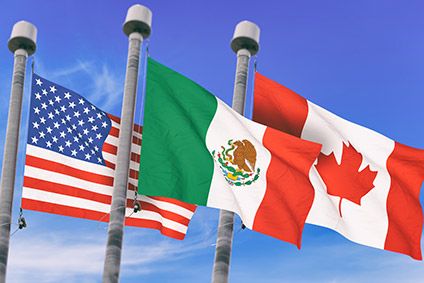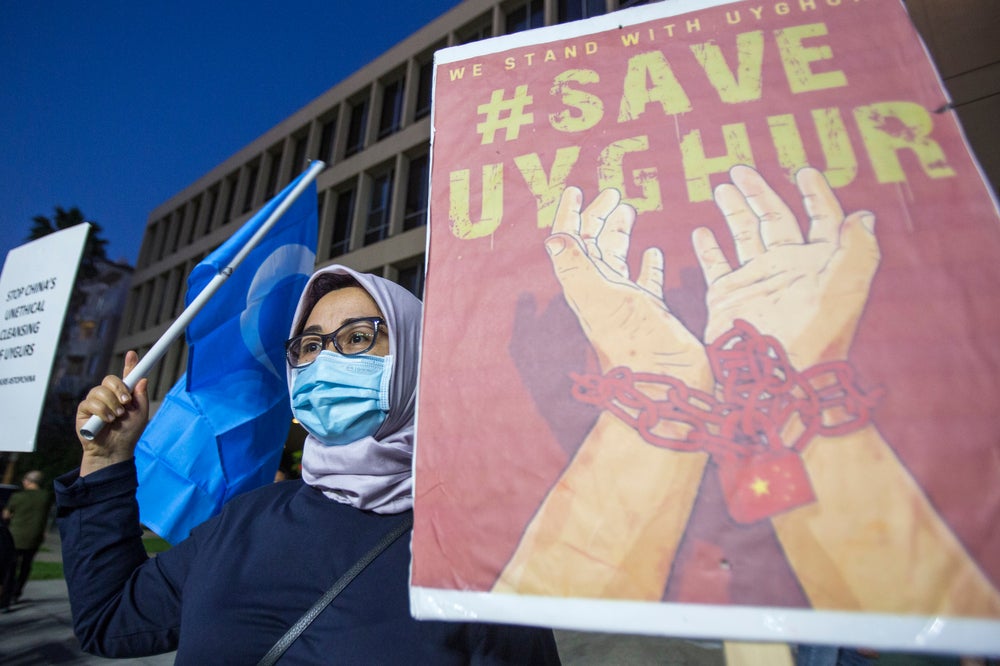
The US-Mexico-Canada Agreement (USMCA) – the regional free trade pact that replaces the North American Free Trade Agreement (NAFTA) – will officially enter into force on 1 July 2020.
US Trade Representative (USTR) Robert Lighthizer notified Congress on Friday (24 April) that Canada and Mexico have now taken measures necessary to comply with their commitments under the agreement.
Following that notification, the United States became the third country to notify the other parties that it had completed its domestic procedures to implement the deal – the final step necessary for the USMCA to enter into force.
“The crisis and recovery from the Covid-19 pandemic demonstrates that now, more than ever, the United States should strive to increase manufacturing capacity and investment in North America. The USMCA’s entry into force is a landmark achievement in that effort,” Ambassador Lighthizer said.
USMCA To Enter Into Force July 1 After United States Takes Final Procedural Steps For Implementation https://t.co/MTgrL801IS pic.twitter.com/opnuC9R5g8
See Also:
— USTR (@USTradeRep) April 24, 2020
How well do you really know your competitors?
Access the most comprehensive Company Profiles on the market, powered by GlobalData. Save hours of research. Gain competitive edge.
 Company Profile – free sample
Company Profile – free sampleThank you!
Your download email will arrive shortly
Not ready to buy yet? Download a free sample
We are confident about the unique quality of our Company Profiles. However, we want you to make the most beneficial decision for your business, so we offer a free sample that you can download by submitting the below form
By GlobalData
The USMCA makes a number of updates and modifications to the 25-year-old NAFTA and will offer qualifying textiles and apparel, travel goods and footwear originating from the USMCA region duty-free access to the US and Canadian markets.
It also includes new provisions on textiles that incentivise greater North American production, strengthen customs enforcement, and facilitate broader consultation and cooperation among the three parties.
It has been described as “a win” for the textile, apparel, and footwear manufacturing and retail industries, with updates that:
- Create a separate chapter for textiles and apparel rules of origin with strong customs enforcement language.
- Strengthen rules of origin for sewing thread, pocketing, narrow elastics and certain coated fabrics. Under the current NAFTA, these items can be sourced from outside the region – USMCA ensures these secondary components originate in the region.
- Fixes the Kissell Amendment Buy American loophole, ensuring that a significant amount the Department of Homeland Security spends annually on clothing and textiles for the Transportation Security Administration is spent on domestically produced products.
The Mexican government notified Canada and the US it is ready to implement the revised North American trade deal earlier this month, following that of the Canadian Parliament, which officially approved the deal on 13 March.
The move comes despite calls from the Commercial Customs Operations Advisory Committee (COAC) and 19 US senators to push back the planned start date for the new trade pact, saying the short lead time would add to pressures on US companies already struggling hard with the coronavirus pandemic.
US Customs and Border Protection has issued interim implementing instructions on the USMCA, including sections that cover the USMCA’s rules of origin for textiles and apparel.
It has, however, been welcomed by the National Council of Textile Organizations (NCTO), with president and CEO Kim Glas noting the trade deal that will “greatly benefit” the US textile industry at a time when domestic producers — facing significant challenges due to the impact of the COVID-19 pandemic — have mobilised to convert their production lines to manufacturing personal protective equipment (PPE).
“Sustaining the $20bn in apparel and textile trilateral trade between the US, Mexico and Canada is absolutely critical at this time. USMCA, which makes several key improvements over the former NAFTA will go a long way to increasing the textile industry’s exports, as well as investments and capacity in the US. We need to maintain and expand a Western Hemisphere supply chain to meet national emergencies head-on in the future,” Glas added.
A detailed analysis of the trade deal on just-style last year looked at its potential impact on the textile and apparel sector: Why USMCA is a balanced trade deal for textiles and apparel.








